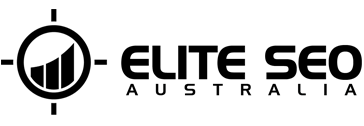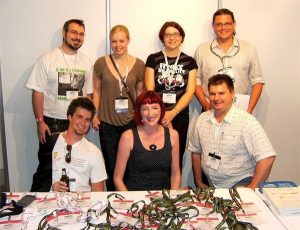SMX Sydney 2009 Recap
I recently returned from the fantastic SMX Sydney 2009 conference, and thought I would share some thoughts on the conference. First thing is first: massive thanks go out to Barry Smyth of Search Strategies for making the entire conference possible for me in the first place. If he hadn’t been extremely generous and awarded allh of the top 3 contestants in Kalena’s t-shirt competition with All-Access passes, I simply would not have been able to afford the conference. Barry and the entire SMX Sydney team, Lisa and David included, are so generous it quite frankly warms your heart. So I’m particularly pleased for them that SMX Sydney was such an unmitigated success… and validates all their hard work.
This was my second time down at SMX Sydney, and the first trip by myself (last year we had an entire team from our office down there). To be honest, the fact that this year I was down there by myself was probably a blessing in disguise. As mentioned previously, I can be painfully shy when first meeting people, but being there by myself forced me to try and deal with that… and while I wasn’t always successful, I at least was forced to make the attempt.
Actually, first off, a tip to future conference goers who are also shy: make it easy for people to find you. This year, I had a shirt made up, that had my social media profiles on, like so:
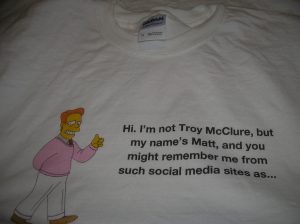
(Front of Shirt… as with all pics in this entry, click for larger view)
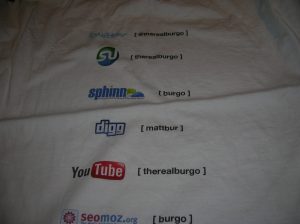
(Back of shirt)
As cheesy as it seems, the shirt really worked out for me on the first day of the conference, and inspired far more conversations than I had even hoped for.
This recap morphed into something resembling Homer’s Odyssey, in terms of length, so here are some jump points for those of you who don’t want to have to scroll through the whole thing:
Day 1
Opening Thoughts, and Rand Fishkin’s Keynote
Video Optimisation with Jason West from Websalad
Maps & Local SEO with Monty Heubsch from Aussie Web Local
Mobile Search with Cindy Krum from Rank Mobile
Lunch
Unravelling URLs and Demystifying Domains with Greg Grothaus from Google’s Search Team
Internal Linking Tactics with Jane Copland from Ayima
The 411 on 301s with Greg Boser from 3 Dog Media
CSS, Ajax, Web 2.0 & SEO with Rob Kerry from Ayima
Bot Herding with Priyank Garg from Yahoo! Search
International SEO with Cindy Krum
End of first day shenanigans
Day 2
Morning Keynote with Bill Tancer from Hitwise
What You Should Be Measuring, But Aren’t with Rod Jacka from Panalysis
Conversion Rate Optimisation with Stephen Pavlovich from Conversion Rate Experts
Lunch/Meet the Search Engines
What is Ethical Social Media Marketing? with Rand Fishkin from SEOmoz
Twitter Tips & Etiquette with Darren Rowse from Problogger
What is Spam? With Greg Grothaus and Priyank Garg
The Site Clinic
SMX Sydney 2009 Harbour Cruise
Day 1
When you arrive at SMX Sydney’s venue, Luna Park, you simply cannot help but be impressed (even if you’re only running on 3 hours sleeps, as I was). It is, quite simply, a fantastic venue, and I for one hope that SMX Sydney remains there. The show was kicked off in style with the opening keynote being given by Rand Fishkin of SEOmoz. I think poor Rand struggled with a tough crowd on the first morning, but one sentiment which I think really echoed with the crowd was Rand’s statement of “SEO is not a strategy… it’s a single tactic”.
I think it’s about time that more SEOs realised this point. SEO is part of a larger picture; an integral part, sure… but just one part.
This is something I’ve been thinking about for quite some time here, and it involves marketing a site in the larger scheme of things. It’s not enough to simply rely on SEO any more. You need to market your site in a way that sets you apart from the others; in a way that gets people talking about your site offline, even. In other words: to work on your site as a brand. Rand’s one statement drove home, for me, what others have long been saying. It ties in with Aaron Wall’s thoughts on the “Vince/Brand Update”, and with Greg Boser’s comments later on at the conference that you need to get to a point with your site where, “SEO is hitting publish”. In other words, build up your site to such an authoritative position that you can basically rank simply by publishing the content.

(The Crystal Ballroom. Pic taken by Andrew Ballard)
After the keynote I headed to the advanced stream for the first session of Video Optimisation, with Jason West from Websalad, Jason’s presentation was fairly basic, but there were one or two takeaways which I feel many people overlook:
- Put up a transcript of the videos on your site [and Greg Boser, as moderator of the session, commented not to be shy about “optimising” the transcript with choice keywords]
- Consider video optimisation as a method of pushing your competitors off the first page.
- Optimum length for videos is less than 3 minutes. Shorter video = more views = more popular = more comments = more bookmarks = higher pr = higher rankings
- Put a call to action at the end of your videos.
Greg Boser, as moderator, then threw in another tip, saying that the biggest missed opportunity he sees is in how people link to their videos in their own video channels. In other words… use that anchor text people!
Personally, the one thing I wished had been discussed more in this session was the actual optimisation in terms of how to rank your video on Youtube itself. Just my own personal opinion, but I believe it’s more than just the keywords used in the description, tags and so on. And I feel it’s even more than the rating and comments of the video. I think the actual number of times the video has been embedded on other sites is a large signal to Youtube.
Next session was Monty Heubsch from Aussie Web Local, discussing Maps & Local SEO
Monty started off the session with one simple statement that should make all SEOs sit up and pay attention: “40% of all searches have local intent”. Monty’s ranking factors, for local search, were as follows: proximity of address, number and quality of reviews, keyword relevancy, SEO characteristics of related site, and links to the local listing”. There were a lot of questions in the Local SEO section, and I think that showed quite dramatically how there really does seem to be a gap in leadership in this field in Australia.
The following session was from Cindy Krum,on Mobile Search, and was easily one of my favourite presentations. Cindy (from Rank-Mobile) talks at the speed of a freight train, but she still has an extremely engaging presentation style that you can’t help but enjoy. Main takeaways from Cindy’s presentation, for me:
- Mobile is the most personal marketing medium ever. It’s one of the few things that is with you all the time (apart from your underwear)
- Mobile Search indicates a desire for immediate action; which is really a holy grail for marketers.
- The major hurdles to mobile optimisation? Lots of Browsers, and many different handsets.
- Your site has to render well on a phone before it RANKS well in mobile search. Also, how it renders on specific phones effects the ranking on that particular make of phone.
- .mobi. Simply don’t. do. it.
- An option to consider is to have mobile/traditional hybrid pages. You can do this using different stylesheets, and an advantage of this is that you only have one URL for the page.
Cindy also mentioned the issues of usability of a mobile site, in terms of:
- The columns of your site will be stacked.
- Images may break
- JavaScript & AJAX will display in full.
- Forms & embedded objects might not work as you would hope, or at all.
Cindy was also careful to point out that while Mobile SEO is based on traditional SEO, there are important differences:
- Different search behaviour
- Different crawlers
- Different algorithms with different results pages
Cindy’s presentation was great, and extremely content rich… so I’m sure that I’ve left out quite a few important points. But hopefully I’ve done her some justice with that recap.
After those three sessions, next up was something equally important… lunch! I should just point out that this year’s catering at SMX Sydney was the best catering ever. Yes, that’s right, I said ever. From fantastic lunches to simply superb teas, the SMX Sydney team really pulled out all the stops when it came to keeping us well fed. So, well done team. Lunch gave me a chance to catch up with some of my favourite online people, including Pete, Michael and Kalena (and later, Darryl and Andy). It also gave me an opportunity to pig out in spectacular fashion.
After lunch, I headed back down to the Sunset Room for the next presentation, which was given by Greg Grothaus of the Google Search Quality team. His presentation was “Unravelling URLs and Demystifying Domains”. Greg’s presentation was, I think, geared more towards the beginners in the crowd, but it was still an interesting presentation nonetheless. Some of the takeaways from his presentation?
- Multiple sites vs. one main site? Really, it’s up to you, but one site helps you build reputation and allows for indented SERPs.
- The canonical link element is treated as a STRONG hint, but not a mandate. If they see it being abused, they reserve the right to react as needed.
- Also, I think special mention should be made of the fact that Greg used the “Dramatic Chipmunk” screen capture in one of his slides, and immeasurably brightened up my day.
After Greg’s presentation, it was time for Jane Copland to get up on stage, and present on “Internal Link Tactics”. I really enjoyed Jane’s presentation, and must say that I think she’s improved on her presentation from last year in leaps and bounds. Jane (who’s now with Ayima Search Marketing) confirmed some points that all SEOs should pay attention to, and also dispelled some myths. Some points from her presentation worth mentioning:
- Internal linking is probably THE most important on page SEO factor, in that it allows people and search engines to navigate, and pass pagerank.
- Search engines rank pages, not sites.
- The least effective forms of internal linking are footer links and sitewide links.
- Use a consistent form of navigation throughout your site!
- Linking out to other pages does not result in a page losing or leaking its PR. When Jane said this, I almost jumped up, shouting “Preach it, sister!”
- Be smart when using the nofollow attribute. When choosing to nofollow a link on a prominent page, consider which pages the linked-to page links to.
- If your site employs a large number of subdomains, then link liberally between them to show that you are all connected.
Next up was the next Greg, Greg Boser, who was going to be talking about “301 Redirects”. Greg (from 3 Dog Media) was easily one of my favourite presenters of the conference, and provided many highlights of SMX Sydney. Some takeaways from Greg’s presentation:
- When choosing on www vs. non-www versions of your site, consider the fact that choosing the non-www will generate the need for more 301s.
- Conditional redirects, (useragent/IP/country-based etc) are typically used when what is best for users conflicts with what is best SEO. I was particularly glad that Greg made this point, and accompanied it with the statement that, “It’s all about getting credit for your work. I worked hard to get that visitor, so I’m not going to apologise for serving them the best content.”
- Self hosted content & syndicated content is a prime example of times to use conditional redirect (in other words, saying, “Hey, Google… this is MY content!”)
Unfortunately my laptop battery went during Greg’s presentation, so I couldn’t take too many detailed notes… but I will say that Greg’s presentation was one of the most fascinating, simply to see his viewpoint on how search engines view SEOs, and how he himself views search engines. For example, Greg’s view on how Google would see conditional redirects was startlingly open: “They hate them… because they cause Google to have to ‘trust’ a site owner far more than they like”.
One other interesting tidbit from Greg which does stick in my mind was his view on 301 redirects, and how Google seems to be changing their stance on them. While “juice transfer” used to be automatic via a 301 redirect, Greg is of the opinion that it is now much more a “conditional” option.
Greg isn’t afraid to talk straight, and admit that he pushes the lines of what search engines may consider acceptable. But, to Greg, he doesn’t really care. As long as he’s serving his best content to that particular visitor, then he feels he has done his job. And I couldn’t agree more.
After the afternoon tea break, it was back to the Sunset Room for me to hear the closing sessions for the day. Rob Kerry from Ayima Marketing was first up, to discuss “CSS, Ajax, Web 2.0 & Search Engines”. According to Rob:
- CSS returns simplicity and scalability to HTML, by separating content from code.
- However, using CSS for cloaking is detectable and dodgy [and, quite frankly, pretty short-sighted].
- Ajax has its good uses, such as data grids/sort tabular data, updating shopping baskets and form verification.
- However, it also has not so good uses, such as content tabs (not indexable), search results (no back button), product listings (can’t bookmark).
- User Generated Content is free, but not free to manage [so, so true].
Rob’s presentation was great, although I think catered perhaps a bit too much to those just learning about CSS, Ajax and Web 2.0. Given just how brilliant Rob is (undeniably), I would have loved to have seen him tackle some more advanced topics.
Next up after Rob was Priyank Garg, of Yahoo!’s search team. Priyank’s presentation on “Bot Herding” was full of useful little tidbits, like:
- When conflicting situations exist between ‘allow’/’disallow’ directives in your robots.txt, the longest rule applies.
- There is a Yahoo directive named, ‘robots-nocontent’… which allows you to identify sections of your page that you don’t want indexed or used in abstracts.
Priyank also opened my eyes to the “My Sites” of their Yahoo Site Explorer, where you can verify your own sites, and then learn how Yahoo! sees your sites (much like with Google’s Webmaster Tools). I was completely unaware of this, and quite frankly was very impressed with what I saw. In this section, the thing I was most impressed with was Yahoo!’s “Dynamic URL Rewriter” tool. Although the “canonical tag” has since largely done away with the need for this tool, to me it seemed perhaps the most efficient method I have seen, and kudos to Yahoo! for the initiative. Put simply, Yahoo! came off very well after Priyank’s presentation.
The final session of the day was to be Cindy Krum (again), presenting on International SEO. Cindy gave a great, practical presentation on the options open to those practising international SEO. Most points have been discussed before, but it was good to see the points demonstrated in such a concise manner; and I was still shown up, with Cindy’s point of, “If you’re going to have a Spanish version of your site, don’t do something silly like title it spanish.example.com… of course make is espanol.example.com” [eep. I hadn’t even thought of that!]
Perhaps one of the most interesting points of the afternoon session came, however, when I asked Cindy a question regarding duplicate content on sites targeting the same language in different countries. Priyank Garg from Yahoo! stepped in and said that duplicate content across different TLD sites (ie example.com, example.co.uk) was not something to worry about. In other words, they did not consider this duplicate content, even if the pages were exactly the same. Greg Grothaus from Google, when questioned, indicated that Google treated this the same way. Quite frankly, I was quite amazed that the search engines were answering this question in such an open, definitive way, as I don’t think any official statements have been made on this in the past. Rand has a nice recap of this point, and I’d encourage you to read it.
And with that, the first day of SMX Sydney 2009 was over. Well… not exactly. The agenda part of the day was over, for sure… but anyone who knows search marketers would know that we wouldn’t let that stop us. After the final sessions were wound up, there were some networking drinks, where I managed to hang out with some of my favourite #invisiblefriends…
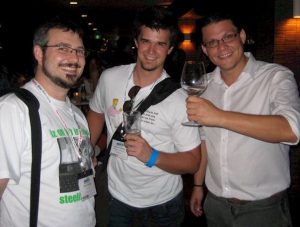
(@sitemost, @therealburgo (me) & @motherwell… the other #invisiblefriends are invisible!)
… after which I headed out for a fabulous dinner with Darryl from iReckon, Andy from Webconsulting, and Pete from Sitemost (the Brissie Boys). After a fantastic meal, we all headed back to the Swerve Bar for another drink or two, when a whole mess of people (and I use the word “mess” purposely there) tumbled in, including people like Greg Boser, Barry Smyth, Jane Copland, Stephen Pavlovich, David Temple, Rand Fishkin, Rob Kerry, Kalena Jordan and Michael Motherwell.
Suffice to say, things went rapidly downhill from there, and I ended up getting lost on the way back to my accommodation. What more perfect way to cap off a day with search marketers could there be? If there is one, I don’t want to know about it.
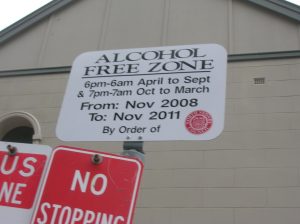
(A sign that was posted on the way back to my accommodation. I fear I broke the law the very first night)
Day 2
Morning two opened with a keynote from Bill Tancer, the GM of Global Research at Hitwise. Considering how empty the hall was for the opening of this keynote, I surmised that I was not the only person who has become lost on their way to their accommodation the night before. Having said that, shortly after Bill started the hall steadily began to fill up and soon enough there was a more than respectable audience. Bill was a confident speaker who went through his presentation well. Some major takeaways from his presentation:
- Google.com and Google.com.au account for 90% of all executed searches in Australia
- In New Zealand, that statistic rises to 92% for Google.co.nz
- Search success in the US is down, and related to that the number of words per query is on the rise. Expect to see the same in Australia
- Searching for brands is extremely prevalent in the Asia-Pac region (eg. Going to Google and typing in “ebay.com”
- Top searches in au market? 1. facebook, 2. eBay, 3. Youtube, 4. Myspace, 5. BOM
- Predictions for next 12 months? Words per query continue to rise, search success rate will continue to degrade, there will continue to be long tail growth, and current search algos will become less effective in helping us find content online.
During the morning tea break, I started talking to Greg (@divinewrite), Darren (@problogger), Ron (@ronerdos) and Ann (@Chiewy), and because they were all such “good peoples”, I unfortunately let time get away from me. Let me just point out though that it never ceases to amaze me the quality of people we have in our industry. Even Darren, arguably one of the more well-known online figures, who surely is pestered daily by people seeking out favours, was one of the most engaging, down to earth people I’ve ever met.
However, because I was having such a great time I pretty much all but missed Rod Jacka’s presentation on, “What You Should Be Measuring – But Aren’t” (sorry Rod!). From the little that I did see though, Rod (from Panalysis) put on a great presentation, heavily focussed on Google Analytics and little known tips on how to open up GA beyond your wildest imaginings.
One, quite frankly, astounding result that came out of Rod’s presentation was that it was discovered that 12% of attendees at the session are still not tracking conversions. Come on people! If you aren’t tracking conversions, you’re basically flying blind. Enough said.
After Rod, Stephen Pavlovich walked to the lectern to present on Conversion Rate Optimisation. Stephen (from Conversion Rate Experts) gave an absolutely cracking presentation, and really drove home something that I think most SEOs in Australia still need to embrace: Do usability testing! It’s as simple as that, yet many, if not the majority in Australia still need to take this to heart. Stephen had a great number of actionable tips to use to improve conversions on your site, such as:
- Find out what people object to, then make changes to address those objections (simple, but effective)
- Use things like Google Analytics, Crazy Egg, Clicktale, Kampyle and 4Q to “listen” to your customers.
- Use authority. Eg. Pictures of authority figures/citing authoritative figures on your site.
- Create a sense of urgency. Get people to act NOW, and if you can’t do that, then at least capture their email address now.
- Do the cost-benefit analysis for your customers.
- Use testimonials from customers to say things that you couldn’t get away with [one of the best tips of the presentation, in my opinion]
- Stephen also showed us Vistaprint.co.uk, possibly the best example of upselling I’ve ever seen.
Stephen’s presentation was concise (despite the fact he had over 70 slides) and well presented. Kudos Stephen.
Next up after this was the lunchtime session in the Crystal Ballroom with two of the three major search engines.So after rushing to get another superb feed, I headed down to listen to Priyank Garg and Greg Grothaus present.
Priyank was up first, and prefaced his presentation by saying that he had been with Yahoo! for four years, and wanted to talk about some of the things that Yahoo! was doing to shake up search.
Priyank started off by discussing Yahoo! BOSS (Build Your Own Search Service). According to Priyank, BOSS:
- Lowers the huge barriers of entry to search. It’s a great time for this, as search is prime for innovation.
- Is Yahoo!’s attempt to open up search to everyone.
- The BOSS API changes everything. It allows you to rerank results, blend content, use any monetization platform, access unlimited queries, present results in any way, brand products in any way. In other words, BOSS allows you to try things that search engines might not have time to try, or might not have thought of.
- With vertical lens in BOSS you could consider creating a search experience for a very niche vertical.
- Fees for BOSS API will come into effect in May 2009.
Priyank then went on to discuss Yahoo!’s Searchmonkey, which allows you to modify your search experience on Yahoo!. And yes, while I agree it is a seriously cool innovation, part of me was yelling, “Yes, it’s cool… but ultimately users only care about the quality of the SERPs you’re returning, not how ‘flashy they look’ or are presented. It’s good, but focus on cleaning up your SERPs!” Ahem.
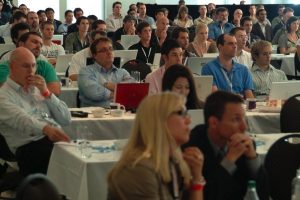
Greg Grothaus from Google then got up to discuss exactly what Google had been up to lately. Things that Greg mentioned included:
- Google Suggest now has a local flavour thrown in.
- The “Crawl Errors” in Google’s Webmaster Tools now not only shows 404s but also details how they found those 404s (which is just fantastic, in my opinion)
- Google has begun sending out messages via Webmaster Tools to those sites that they think might be vulnerable to hacking.
- Search Wiki (although he didn’t spend too much time on it… personally I think because it’s a dud. He did mention though that they are obviously looking at how to use that data)
- Google have also improved their flash indexing (not like we don’t hear that every year)
While there was nothing groundbreaking in either presentation, I think it must be mentioned again how open and approachable both Priyank and Greg were during their sessions at the conference. Kudos to both, as it was much appreciated by attendees.
Next session up was one I had eagerly been waiting, Rand Fishkin on “What is Ethical Social Media Marketing?”Rand (from SEOmoz) started off talking about several ethical tenets that we should adhere to:
- Don’t break the law
- Don’t Hurt People or Organisations
- Which includes: no hacking, malware, misdirections, financial fraud, email spam
With that context laid down, however, Rand was quick to point out that this does NOT include:
- Anonymity
- Omitting Relationship Details
- Promoting content to benefit an individual or organisation
- Promoting content on contract
So yes… sometimes this means playing it smart and considering how far you want to take “full disclosure” on social media sites. Rand then went on to discuss characteristics of what “Social Media Experts” are doing:
- They stay under the radar (STFU anybody?)
- They build diverse networks
- They adopt paranoia as a lifestyle
- They rely on the strength of the content (ie. Knock it back if it isn’t good enough)
- They remain pragmatic
Rand then gave possibly the most twittered section of SMX Sydney 2009: 10 Tips on Social Media Success:
- Build Simple Stuff
- Make it look authentic
- Expect 75% of Viral Efforts to fail
- Don’t let too many cooks into the kitchen
- Funny Sells
- Funny is hard, Interesting is easier
- Consider microsites
- Hire professional pushers
- DON’T try to help them push it.
- Use Social Media to accomplish Business Goals
The presentation was worth it for those 10 tips alone!
Darren’s presentation on “Twitter Tips” was another highly anticipated session, and the room was absolutely packed… and he of course didn’t let us down.
Darren (from Problogger) gave us the benefits of twitter for him:
- Branding
- Networking and Collaboration
- Research Tool
- Drive Traffic
- Deepens Relationships
- Indirect SEO benefits
And then outlined how businesses could use twitter in a direct method:
- Customer Service
- Marketing
- PR
- Branding
- Reputation Management
- Driving Traffic
- Networking
- Research
- watching keywords
- Reputation management
- Damage Control
- Deepen and Reinforce
- Relationships
- Opportunity for sales
Darren then went on to quote @pistachio’s work, who I would highly suggest you check out.
Tips to businesses starting out:
- Reserve accounts
- Learn the culture and language
- Find a tour guide
- Identify key players
- Listen and monitor
- Identify objectives
Another interesting tidbit from Darren? Dell operates 34 (yes, 34) Twitter accounts. You can check them all out here: http://www.dell.com/twitter. Another nugget of gold? “If you want to encourage retweets, make sure to leave a space at the end of your tweets!”
After an afternoon tea break, where I claimed (and still do) that the chocolate brownies were the tastiest thing I had ever tasted, I headed back to the Sunset Room for the “What Is Spam?” session with Greg Grothaus, Priyank Garg, and moderator Rob Kerry.
First off, the one thing I think could have made this session better would have been to arrange to have more acknowledged black hat SEOs on the panel. It would have increased the entertainment factor 10 fold. That said, it was still a great session, with some interesting takeaways.
Greg from Google was up first, to discuss how Google viewed spam. Google’s definition of spam is anything that violates Google’s quality guidelines. In other words:
- White hat SEO is SEO within their quality guidelines
- Black hat SEO is SEO outside of their quality guidelines.
(if only things really were that cut and dried in the real world)
Examples of Spam according to Greg:
- Hidden text or Hidden Links
- Sneaky Redirects or cloaking
- Schemes to artificially boost links
- Off-topic keywords or keyword stuffing
- Duplicate content on multiple sites/pages (doorway pages)
- Misleading or deceptive behaviour that harms users
- Paid links
Greg then displayed a slide that showed a never ending circle, that shows how Google deals with spam. I thought the graphic representation was interesting, but I’ll try to replicate it just in one stream below. Imagine it being a circle though, ok?
Site Indexed > Detection > Corrective Action > Webmaster Fixes Site > Reconsideration Request > Approval > Site Indexed… and so it begins again.
Greg went on to talk about types of spam that you should be aware of that could affect your own site, such as:
- Comment Spam
- Hacked Sites
- Link Injection
To combat which he suggested:
- Captchas
- Keep your software up to date, and try queries like site:example.com.au Viagra to see if Google detects anything like that on your site
After Greg, Priyank was up next. Priyank’s presentation was short, but sweet, and accepted for far more grey areas than Greg’s did (which I thought was a great thing). Priyank started off his presentation by pointing out that Yahoo! viewed spam as anything that went against their Webmaster Guidelines, but that all the guidelines were applied sensibly, leaving room for special cases.
Yahoo! view their goal as:
- Attempting to minimize spam (algorithmically and manually), rather than punishment.
He then went on to mention that you can ‘disavow’ spammy inlinks in the “My Sites” section of Yahoo! Site Explorer.
Related to this point, during the Q&A which followed, the question was asked whether inbound links can hurt your site. Priyank said that this was not the case, and Greg largely agreed… although he said that if it was blatantly obvious the site was engaging in such tactics, then they might take steps against this.
After this lunch time session, the next item on the agenda was the “Site Clinic”.
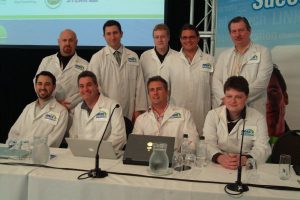
(Photo again courtesy of Andrew Ballard)
Half stand-up comedy, half actionable SEO tips, the site clinic is something that sets SMX Sydney apart from other search conferences. The site clinic is the kind of session that is pretty much impossible to transcribe, but a few interesting statements were made:
- Michael Motherwell (who never ceases to amaze me) suggested that SpaceOut, a storage website could be used as a resource for those looking to set up meth labs in spare garages. And Greg Boser suggested dead bodies. (Disclaimer: for all of those without a sense of humour, these statements were made purely in jest, much like pretty much any comment that involved one of the sites covered in the Clinic, “EatOut.co.nz”. Oh go on, you’re thinking about it, aren’t you?)
- I think special mention should be made that Michael, despite all rumours, did NOT say “dildo” this year. Although, let the rumours start…
- “As Seen On Google” was one site’s by-line. We all found this hilariously funny, and says something about a Search Marketer’s sense of humour. I vote that “As Seen On Google” becomes SMX Sydney’s slogan.
- Rand discovered that Billabong.com.au was using hash tags symbols on each of its product pages; and, as we all know, this means that none of their products could be indexed by the search engines.
- While it was no “outing Flight Centre for cloaking”, as happened in 2008, one site which was involved with the clinic, creditcardfinder.com.au was (semi) outted for link buying. Greg from Google, who brought up the point, was quick to point out that those links were not actually doing anything for them; and that Google would have already discounted them. Although, to be honest, I’m not sure how many believed him.
After the Site Clinic, the official agenda of SMX Sydney 2009 was over. And what a great conference it had been.But for a number of attendees, the event itself was not quite over… we could not quite leave Sydney without the traditional “SMX Under The Bridge” networking event. While this had taken the form of a BBQ under the bridge the previous year, this year (due to some trumped up legality involving the amount of liquor search marketers can actually drink legally in a park) the event took the form of 2.5 hour cruise around the stunning Sydney Harbour. This cruise was, quite simply, the perfect way to cap off the perfect conference.
Many drinks were had, many new friends made, (Cathie, I’m looking at you here), and many embarrassing stumbles taken on a rocking boat. The stories I could tell from that night, from being booted out of clubs to stories of Scooby Doo underwear and Voltron obsessions… well… perhaps I shouldn’t, to protect the innocent. Some things are best left unsaid, right? Even us search marketers need to keep some secrets….
Still, here are some pictures of the night (mostly taken from Andrew Ballard and Andy Henderson… thanks guys!):
(#Invisiblefriends. If you don’t know, I’ll never be able to explain it)
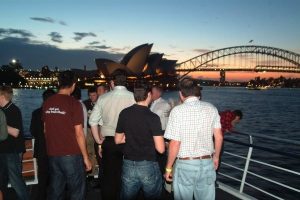
(The view from the top deck on the cruise. Just a terrible view, isn’t it?)
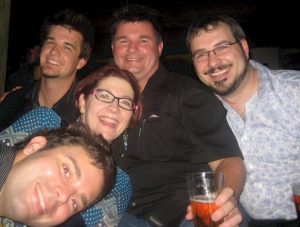
(Night out. Looks like we’re having a terrible time, doesn’t it?)
***
Overall impressions? SMX Sydney 2009 was the best search conference I’ve been to, bar none. The speakers were all extremely friendly and approachable, particularly the international rockstar SEOs. The agenda was well laid out, and I think the introduction of the “Two Stream” system as opposed to the “Three Stream” system from the previous year worked out very well. The only possible suggestion I could make would be for the conference organisers to consider catering for more advanced sessions. I realise that there is a fine line to walk between advanced/basic in order to cater for the most amount of attendees, but I think the fact that the advanced sessions were by far the busiest sessions this year demonstrated that Australia is ready for a more advanced conference.
Again, thanks must be made to Barry Smyth, Lisa Davis and David Olsen. They put together the perfect conference, and all I can say is: Here’s to SMX Sydney 2010!!
***
Other suggested roundups?
Kalena has a great recap, as does Bruce Clay Australia, Jane Copland and Greg from DivineWrite. Check them all out, seriously… and let me know if there are any others I should add in.


